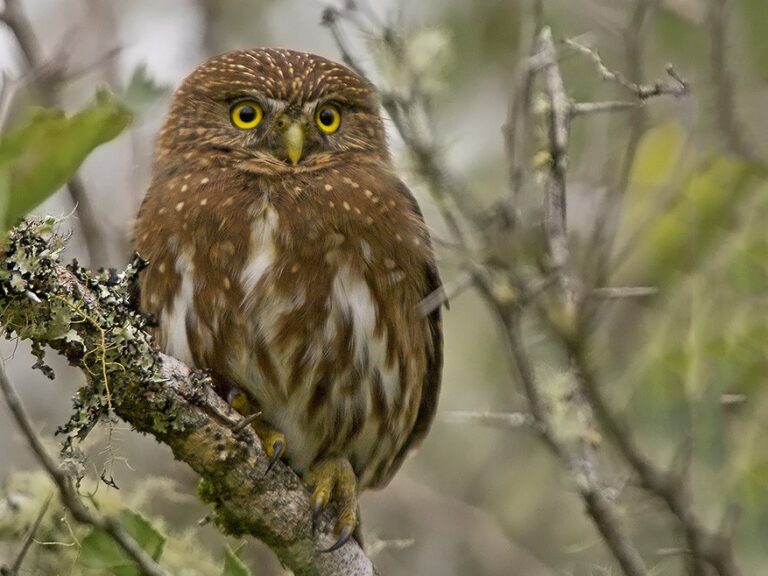Ferruginous Pygmy-owl Glaucidium brasilianum
Taxonomy
Scientific name:
Glaucidium brasilianum
Family:
Strigidae
Genus:
Glaucidium
Species:
Brasilianum
Common names:
Ferruginous pygmy-owl
Biology
Morphology:
Ferruginous pygmy-owls are very small and reach a size of only about 15 to 19 cm tall. They have round heads with black eyespots on the back and yellowish eyes. Adults often have white eyebrows, and white streaks on their heads. The body of the owl is reddish-brown with white streaks. The long tail is also reddish-brown. Their wings often have white streaks as well. The underparts are white.
Reproduction:
Ferruginous pygmy-owls are monogamous and nest in natural cavities of trees, stumps or cactuses often made by woodpeckers. Usually they lay 3 eggs and incubation usually lasts 23 to 28 days. The young remain dependent on the parents for about 8 weeks.
Diet:
Feeds mainly on insects such as grasshoppers, beetles and moths. But also on amphibians, reptiles such as lizards, small birds such as flycatchers and sparrows, and small mammals such as mice.
Ecology
Range:
From central Mexico to the south of Brasil. From sea level to up to 3,000 m in Peru.
Habitat:
They live in diverse areas, from urban to subtropical and tropical, including forests, coffee farms, grasslands, jungles, bushes, etc.
Threats
Deforestation and habitat destruction. IUCN Red List: Least concern.

